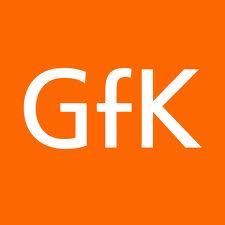 DDMM launches mobile audience survey in the Netherlands
DDMM launches mobile audience survey in the Netherlands
Amsterdam, 21 May 2014 – Results published today of the latest DDMM survey show that the major media brands are substantially increasing their monthly reach via smartphones and tablet computers that have now been added to the DDMM survey. On average, the 50 leading media brands have increased their reach by 66 percent.
The reach figures published today by VINEX, PMA and GfK for mobile and regular websites and apps indicate that the average cross platform reach of a top-50 brand – across PCs, smartphones and tablet computers – amounts to 15.7 percent. Without the mobile share of smartphones and tablets, this reach would be 9.4 percent. In other words, adding mobile devices to the mix of measured channels results in a 66 percent increase.
The average collective reach of top-50 brands is exactly the same for smartphones as it is for tablets – namely 4.4 percent. There are substantial differences from one brand to the next, however. While NPO realises a monthly reach of 6 percent via smartphones, for instance, its reach via tablet computers goes up to 11 percent. There are also major differences between the different news sites: Nu.nl is bigger on smartphones than on tablets, while the reverse applies to De Telegraaf.
The leading digital brand within the group of DDMM participants is Google – with an average monthly reach of 84 percent – followed by YouTube (62 percent). These figures indicate the brands’ reach in the 13+ age group via PC/laptop, smartphone and/or tablet. While the top-50 partners still realise the main share of their digital reach via consumers’ PCs and laptops, in the case of some brands, more than 50 percent of the visitors already arrive via mobile devices. This is the case with Nu.nl, Buienradar, NOS and Voetbal International, for instance.
About the survey
Mobile reach data are collected within the DDMM panel survey. The continuous online audience survey DDMM, which stands for Dutch Digital Media Measurement, is a joint project of VINEX, PMA and GfK. The DDMM survey panel comprises 9,250 respondents in the 6+ age group. Within a select part of this survey panel, measurement software was installed on 1,800 of respondents’ mobile devices. This software makes a precise record of all the respondents’ visits to websites and use of mobile apps. These data are subsequently projected to the total survey panel, after which they can be reviewed in combination with reach figures for regular website visits via desktop computers and laptops.
By measuring people’s visits to both mobile and regular websites within a single survey panel, DDMM is able to determine the net reach of the various sites and apps across a range of devices and platforms. This offers insight into consumers’ use of smartphones, tablets and PC/laptops on the basis of data from a single survey panel. This is a first for the Dutch market – and indeed one of the first times this has ever been done worldwide.
The addition of mobile reach data means that respondents’ time spent surfing – as measured within the DDMM survey – have more than doubled. This leads to a better understanding of the public’s consumption of digital channels and platforms. These insights are used by both publishers and media agencies to deploy and promote such channels more efficiently.
From the April data set on, DDMM will offer its measured reach figures with over 360 background characteristics, ranging from the respondent’s home ownership status to his or her personal interests, and from his or her employment status to chosen holiday destinations. This data will be distributed via GfK’s planning software to the various publishers and media agencies.
About GfK
GfK is the trusted source of relevant market and consumer information that enables its clients to make smarter decisions. More than 13,000 market research experts combine their passion with GfK’s 80 years of data science experience. This allows GfK to deliver vital global insights matched with local market intelligence from more than 100 countries. By using innovative technologies and data sciences, GfK turns big data into smart data, enabling its clients to improve their competitive edge and enrich consumers’ experiences and choices.
For more information, please visit www.gfk.com or follow GfK on Twitter: www.twitter.com/gfk_en
